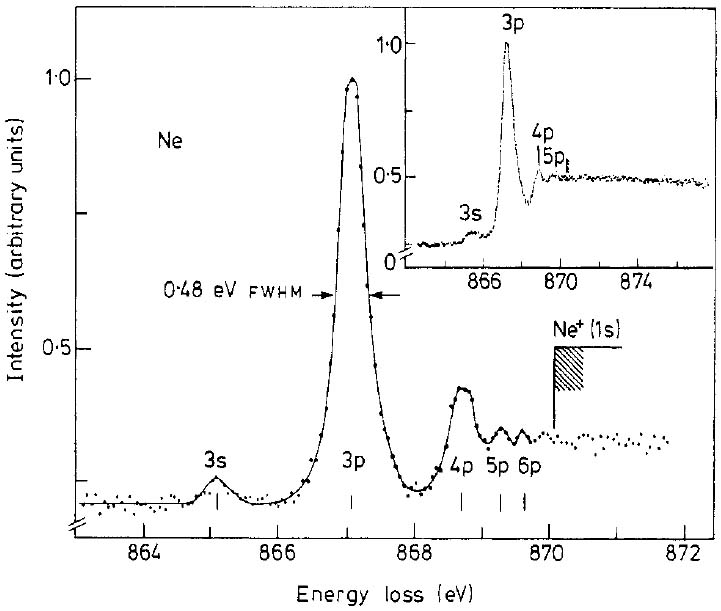=================================================================================
Electron energy-loss spectroscopy (EELS) has been applied to study the excitation of the inner-shell electrons of gaseous atoms [1] and molecules [2-5] with low-energy incident electrons, e.g. at 2.5 keV. At these low energies, the spectra are dipole dominated and are analogous to photoabsorption spectra obtainable with bremsstrahlung or synchrotron radiation. The continuously variable energy loss is similar to a tuneable photon energy.
The electron energy-loss spectrum of gaseous neon in the region of 1s (K-shell) excitation was investigated using small-angle (2 x 10-2 rad)) inelastic scattering of 2.5 keV electrons. [6] Figure 2661 shows the EELS profile of neon in the region of 1s excitation.

Figure 2661. The EELS profile of neon in the region of 1s excitation. The main figure was obtained with a resolution of 0.37 eV FWHM (full width at half maximum) while the insert spectrum was recorded with a resolution of 0.8 eV FWHM.
[6]
[1] King G C, Tronc M, Read F H and Bradford R C 1977 J. Phys. B: Atom. Molec. Phys. 10 2479.
[2]
Hitchcock A P and Brion C E 1978 J. Electron Spectrosc. 13 193.
[3]
Hitchcock A P and Brion C E 1978 Chem. Phys. 33 55.
[4] Hitchcock A P and Brion C E 1980 J. Electron Spectrosc. 18 1.
[5] Tronc M, King G C and Read F H 1979 J. Phys. B: Atom. Molec. Phys. 12 137.
[6] A P Hitchcock, and C E Brion, Neon K-shell excitation studied by electron energy-loss spectroscopy, 1980 J. Phys. B: At. Mol. Phys. 13 3269.
|
